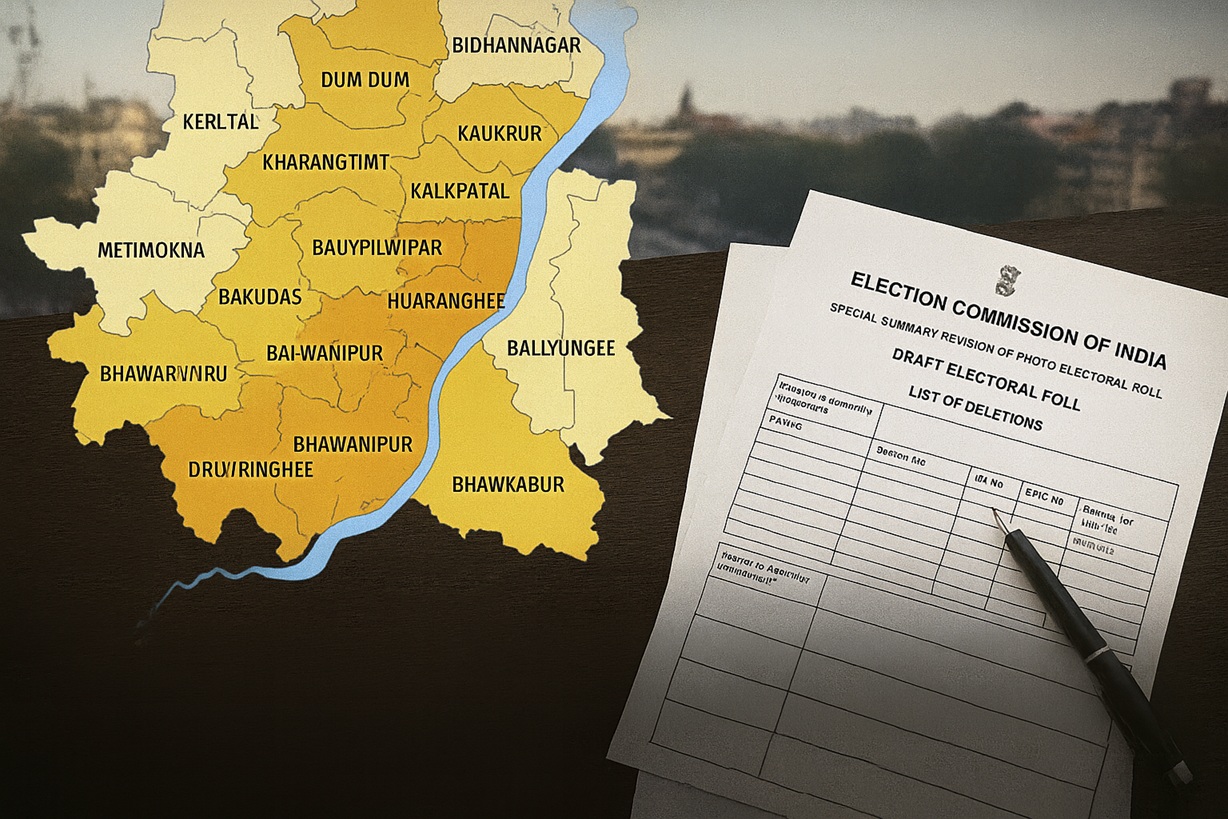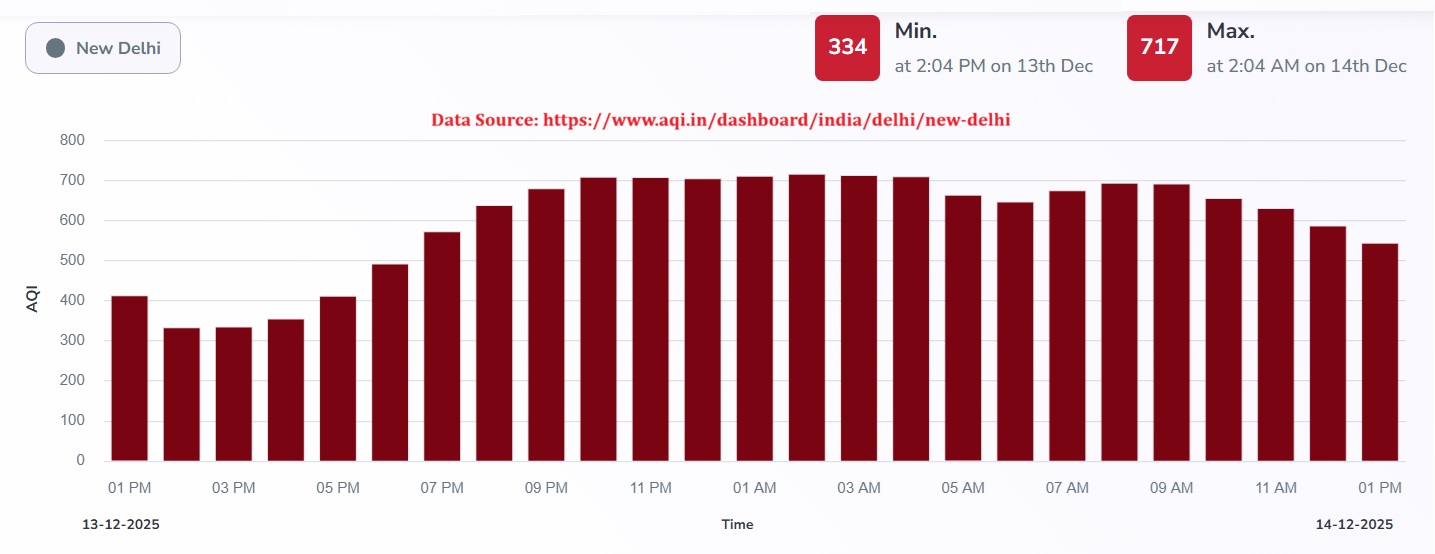On March 11, 2024, India achieved a significant milestone in its strategic defence capabilities by successfully test-firing the Agni-5 ballistic missile equipped with Multiple independent re-entry Vehicle (MIRV) technology. Developed by the Defence Research and Development Organization (DRDO), this achievement marks a major advancement in India’s missile program. India is now a part of the elite club of the countries which possess MIRV. Other countries that have the same capabilities include the US, Russia, China, France, and Britain.
Series of Agni Missiles
Agni (“Fire”) is a family of medium to intercontinental range ballistic missiles developed by India, named after one of the five elements of nature. Agni missiles are long-range, nuclear weapons capable, surface-to-surface ballistic missiles.
| Name | Type | Range | Status |
| Agni -I | MRBM | 700-1200 Km | Operational |
| Agni-P | MRBM | 1000-2000 Km | Operational |
| Agni -II | MRBM | 2000-3500 Km | Operational |
| Agni -III | IRBM | 3000-5000 Km | Operational |
| Agni -IV | IRBM | 3500-4000 Km | Operational |
| Agni -V | ICBM | > 5000 Km (7000-8000 Km) | Operational |
| Agni VI | ICBM | > 10000 Km (11000-12000 Km) | Under development) |
Key Features of the “Agni-5 intercontinental ballistic missile (ICBM)”
- Jointly developed by DRDO and Bharat Dynamics
- The reported range exceeds 5,000 kilometres.
- Three-stage solid-fueled propulsion system
- Can carry a 1500 Kg nuclear warhead.
- Weighting close to 50,000 Kg
- Height is 1.75 meters and diameter is 2 Meters
- Can clock at 24 times faster than the speed of sound
- Can reach a speed of 8.16 Km/second or 29401 Km/Hour
- Equipped with advanced navigation systems including a ring laser gyroscope inertial navigation system (NavIC) and satellite guidance,
- Launch flexibility from mobile launchers.
Range of “Agni-5 intercontinental ballistic missile (ICBM)”
The Agni-5 missile, with a reported range exceeding 5,000 kilometres, could potentially strike targets in many countries depending on the launch location within India. Here’s a list of some countries that are within range:

Photo Credit: Venugopal Narayanan
- China: This was likely the primary target in mind for the Agni-5’s development. The missile’s range allows it to reach most of mainland China, including its eastern seaboard with major economic centres.
- Pakistan: India’s neighbour is well within range of the Agni-5 from most launch locations.
- Most of Central Asia: Countries like Kazakhstan, Uzbekistan, Turkmenistan, Kyrgyzstan, and Tajikistan would likely fall within the missile’s range.
- Parts of Southeast Asia: Depending on the specific launch location, some countries in Southeast Asia, like Myanmar, Laos, Thailand, and Vietnam, could be within range.
MIRV Technology: Enhancing Strike Capability:
MIRV technology enables a single ballistic missile to carry multiple independently targetable warheads. These warheads separate during the final stages of flight, allowing them to strike distinct targets. The integration of MIRV technology into the Agni-5 offers several advantages, including increased destructive potential, enhanced survivability, and greater credibility as a deterrent.

SWOT analysis of the Agni-V, MIRV test
The successful test of the Agni-5 MIRV has significant implications for India’s missile program and regional security dynamics. It may prompt neighbouring countries to re-evaluate their defence strategies.
Strengths:
- Deterrence Enhancement: The MIRV-equipped Agni-5 strengthens India’s credible minimum deterrence posture. It complicates potential advisory defences and increases the potential for successful warhead delivery.
- Technological Advancement: This test showcases DRDO’s expertise in complex missile technologies like MIRV integration. This success paves the way for further advancements in areas like hypersonic weapons and precision guidance systems.
- Boost to National Security: The Agni-5 MIRV bolsters India’s ability to respond to potential security threats and ensures its strategic autonomy in a complex geopolitical landscape.
Weaknesses:
- Escalation Risks: The introduction of MIRVs can heighten regional tensions and increase the risk of accidental escalation during a crisis.
- Limited Transparency: The secrecy surrounding the exact capabilities and deployment plans of the Agni-5 MIRV can create suspicion and mistrust among neighbouring countries.
- Resource Drain: Developing and maintaining advanced missile systems like the Agni-5 MIRV can be resource-intensive. This might divert funds from other crucial national priorities like social welfare or infrastructure development.

Opportunities:
- Diplomacy and Disarmament: The presence of MIRVs could act as a catalyst for renewed focus on arms control and disarmament efforts.
- Strengthening Deterrence through Cooperation: India could collaborate with like-minded countries to develop a shared minimum deterrence strategy, potentially reducing the overall number of missiles and warheads required for security.
- Promoting Regional Stability: Open communication and confidence-building measures among regional powers can help mitigate the risks associated with MIRV technology and promote regional stability.
Threats:
- Arms Race: The deployment of MIRVs by India might trigger a regional arms race, pressuring neighbouring countries to develop similar capabilities. This could lead to a dangerous cycle of mistrust and heightened tensions.
- International Scrutiny: The test might attract criticism from countries advocating for nuclear non-proliferation. India must effectively communicate its commitment to disarmament alongside its right to develop its indigenous deterrent capabilities.
- Destabilization of Regional Security Dynamics: The introduction of MIRVs has the potential to disrupt the existing balance of power in South Asia.
India is ranked 5th in the world’s GDP rankings in 2024 and In Modi’s third term, India is poised to become the world’s third largest economy. Along with economic growth, successful Agni-5 MIRV test is a commendable achievement for India’s defence program. It signifies India’s potential to emerge as a major power on the world stage. Along with stable political leadership, sustained economic growth, technological advancement, strategic partnership and a commitment to peaceful global engagement, days are not far when India will emerge as a “Super Power” in world politics.
Reference: https://www.youtube.com/watch?v=SzaJBTrVQvg







